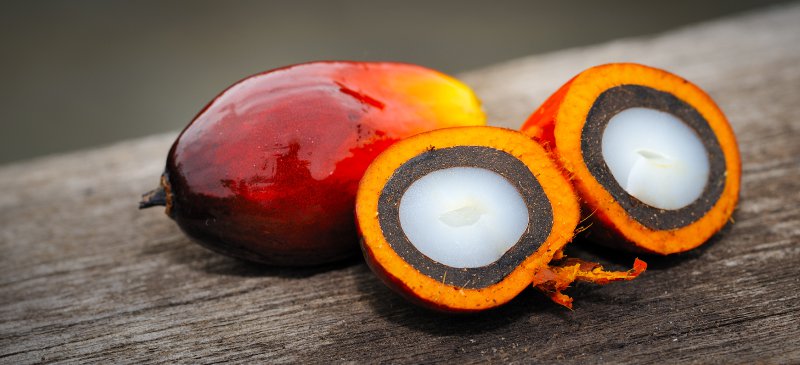There aren’t very many food ingredients as essential to local Nigerian cuisine as palm oil. The red liquid drained out of tough oil palm fruits is the fluid without which most indigenous soups, stews and snacks simply cannot exist. You couldn’t possibly have been born and bred in a southern Nigerian home and never tasted of its slippery goodness in one form or the other.
Given its use in so many traditional dishes, you’d expect that it is a commodity with such massive economic weight. Surely, the farmers running oil palm plantations should be taking fine returns from their labours, and the merchants who trade the ‘red oil’ must be pleased with their earnings. That’s the ideal scenario for a country with greater than 200 million inhabitants, many of whom consume the product almost every other day.
But the oil palm farmers and crude traders of its product aren’t exactly having it all easy at the moment. Demand is high, but production is stifled by multiple challenges, including operational costs, the paucity of processing facilities and the influx of imported versions of the supposedly Nigerian consumable. Businesses in this space speak of a past in which things were better, an era in which the country was the undisputed oil palm capital of the world.
There was indeed such a golden era in the nation’s life. It’s said that in the early 1960s, Nigeria controlled up to 43% of the world’s palm oil market. There were no real rivals on the global stage. Malaysia and Indonesia, the countries which now meet most of the human demand for palm oil on the planet, were barely in the fray at that time. They were taking notes from the Giant of Africa.
Becoming the Oil Palm Capital of the World
In fact, Nigeria- or the region later called by this name -probably occupied this top spot for millennia. The crop is indigenous to West Africa, as there’s evidence that people in the area were using material from it for food as far back as 5,000 years ago. They may also have traded it with far away civilizations, including ancient Egypt, where some high ranking figures were buried with oil palm husks.
Closer to the modern age, the Europeans found palm oil to be useful for several purposes. It was a fine edible oil; it could also be used in the manufacture of soap. The industrial revolution in Europe and the rise in demand for these finished products fueled the interest of pre-colonial traders from the Northern Hemisphere. And it was their eagerness to take control of the trade on the West African coast, among other things, that spurred them on to conquer the local kingdoms in the area.
Many acquired great wealth from their involvement with the commerce that developed around the commodity. This was true in the colonial days when the United Kingdom and other colonial powers reaped huge fortunes from the palm oil business. Industrial giants operating on Nigerian soil, as well as in Europe, grew rich from the continuously expanding scope of the business, and a never drying need for the product in both continents.
At the time of the country’s independence, it was by far the world’s biggest supplier of palm oil.
Growing Challenges
Nigeria’s agriculture sector suffered neglect as revenues from its crude oil exports grew in the 1970s. Commentaries on its economic history regularly blame this growing dependence on petrodollars for its slackening food production. They also point to the ravages of the civil war, which negatively affected some of the regions in which oil palm was being grown, and set the industry’s development back several years.
However, available data on oil palm production in Nigeria over the past several decades suggests a more complex history of the product’s fortunes. They reveal that, on the average, the country presently produces even more palm oil than it did in the 1960s when it accounted for half the world’s output. It’s just that this growth has been dwarfed by the speedy explosion in demand for the product, both locally and abroad.
Today, almost all of the palm oil produced in Nigeria is consumed domestically. In fact, there’s a supply gap on the home front, which is currently being filled by palm oil imports. Malaysia and Indonesia, which didn’t grow the oil palm until the 19th century, have become the world’s leading producers and exporters of the product.
Hopes for a More Oily Future
There’s still a chance that the tide could turn for the industry. Although it’s struggled under the weight of high production costs and the limited number of processing facilities, government action aimed at tackling these drawbacks could lift some of the businesses in the sub-sector and reinvigorate them.
Of course, the first priority will be to meet domestic demand. The gap left unfilled is vast and still growing. Perhaps we can expect more than a handful of palm oil millionaires to emerge with a strengthening of the industry. Time will tell.
References
- Index Mundi: Nigeria Palm Oil Production by Year.
- Theoilpalm.org: History and Origin.
- The Sunday Guardian, Declining Palm Oil Production, Yet Another Drawback for Economic Diversification.
- International Journal of Management Sciences and Business Research, Crude Palm Oil and Its Economic Importance in Nigeria (PDF). Retrieved from www.researchgate.net
Featured image source: draxe.com


